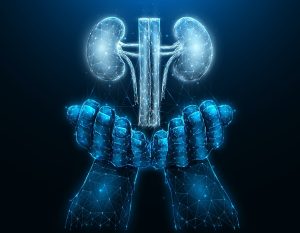
Urethral conditions can significantly impact a person’s quality of life, affecting both men and women. These conditions involve the urethra, the tube that carries urine from the bladder out of the body. Emirates Hospitals Group, with its comprehensive urology departments, offers advanced diagnostic and treatment options for a wide spectrum of these conditions.

Common Urethral Conditions:
Several conditions can affect the urethra, leading to discomfort and urinary issues. Among the most common are:
- Urethritis: This is an inflammation of the urethra, often caused by bacterial infections, including sexually transmitted infections (STIs) like gonorrhea and chlamydia. Non-infectious causes, such as irritation from chemicals or physical trauma, can also lead to urethritis.
- Urethral Stricture: This condition involves a narrowing of the urethra due to scar tissue, which can impede the flow of urine. It often results from injury, infection, or inflammation, and is more prevalent in men due to their longer urethra.
- Urinary Tract Infections (UTIs): While UTIs can affect any part of the urinary system, the urethra is often the initial point of entry for bacteria, leading to urethritis as part of a broader UTI.
Symptoms:
The symptoms of urethral conditions can vary depending on the specific ailment but often include:
- Pain or burning during urination (dysuria): A hallmark symptom of urethritis and UTIs.
- Frequent or urgent need to urinate: The inflamed urethra can trigger a constant sensation of needing to void.
- Difficulty urinating or a weak urine stream: This is particularly indicative of urethral stricture, where the narrowing obstructs flow.
- Discharge from the urethra: Common in urethritis, especially if caused by an STI. The discharge can be clear, cloudy, or yellowish-green.
- Blood in urine (hematuria) or semen (hematospermia): Can occur with inflammation, strictures, or more severe conditions.
- Pelvic pain or discomfort: General pain in the lower abdomen or genital area.
- Itchiness or tingling at the urethral opening.
- Swelling of the penis or testicles (in men).
Diagnosis at Emirates Hospitals Group:
Emirates Hospitals Group employs state-of-the-art diagnostic methods to accurately identify urethral conditions. The diagnostic process typically involves:
- Detailed Medical History and Physical Examination: The urologist will inquire about symptoms, medical history, and conduct a thorough physical examination.
- Urine Tests:
- Urinalysis: To check for the presence of white blood cells, red blood cells, and bacteria, indicating infection or inflammation.
- Urine Culture: To identify the specific type of bacteria causing an infection and determine the most effective antibiotics.
- Urethral Swab: If discharge is present, a sample is collected from the urethra to identify the infecting organism, especially for STIs.
- Imaging Studies:
- Urethral Ultrasound: To visualize the urethra and assess the length and severity of strictures.
- Retrograde Urethrogram (RUG): An X-ray procedure where a contrast dye is inserted into the urethra to outline its structure and identify any narrowing or abnormalities.
- Cystoscopy: A minimally invasive procedure where a thin, flexible tube with a camera (cystoscope) is inserted into the urethra and bladder to directly visualize the lining and identify strictures, inflammation, or other issues.

Treatment Options:
Treatment approaches vary based on the diagnosis and severity of the condition. Emirates Hospitals Group offers a range of medical and surgical interventions:
- Medications:
- Antibiotics: For bacterial infections like urethritis and UTIs. The type and duration of antibiotics depend on the identified pathogen.
- Anti-inflammatory drugs: To reduce pain and swelling.
- Urethral Stricture Treatment:
- Urethral Dilation: This is a minimally invasive procedure where specialized instruments called dilators, which gradually increase in diameter, are passed through the urethra to stretch the narrowed segment. A balloon catheter can also be used for dilation. While providing immediate relief, strictures may recur, sometimes requiring repeat dilations or self-catheterization by the patient.
- Endoscopic Urethrotomy (Direct Vision Internal Urethrotomy – DVIU): Performed under general or local anesthesia, a cystoscope with a small knife or laser is inserted into the urethra to precisely cut the scar tissue causing the stricture. A catheter is typically left in place for a few days post-procedure to facilitate healing and maintain the widened passage. This is often suitable for shorter strictures.
- Urethroplasty: Considered the gold standard for long-term stricture repair, urethroplasty is an open surgical procedure to reconstruct the urethra. The specific technique depends on the stricture’s length and location.
- Excision and Primary Anastomosis: For short strictures, the scarred segment is surgically removed, and the healthy ends of the urethra are reconnected. This procedure has high success rates.
- Substitution Urethroplasty: For longer or more complex strictures, tissue (often from the inside of the cheek, called buccal mucosa, or sometimes penile skin) is grafted to augment or replace the narrowed portion of the urethra, creating a wider, functional tube. This can sometimes be a staged procedure.
- Implanted Stent or Long-Term Catheter: In cases of severe strictures, particularly for patients who are not candidates for surgery, a temporary or permanent stent may be placed to keep the urethra open, or a long-term catheter may be used for drainage.
Emirates Hospitals Group emphasizes personalized care, utilizing advanced techniques and a multidisciplinary approach to ensure optimal outcomes for patients suffering from urethral conditions.
Frequently Asked Questions
Common symptoms include pain or burning during urination (dysuria), frequent or urgent need to urinate, difficulty starting urination or a weak stream, discharge from the urethra, and sometimes blood in urine or semen. If you experience any of these, it’s advisable to consult a urologist.
Diagnosis typically involves a detailed medical history and physical exam, urine tests (urinalysis, urine culture), and sometimes a urethral swab. For strictures, specialized imaging like urethral ultrasound or retrograde urethrogram (RUG) may be used. A cystoscopy might also be performed for direct visualization.
Emirates Hospitals Group offers various treatments for urethral strictures, including minimally invasive procedures like urethral dilation and endoscopic urethrotomy (DVIU). For more complex or recurrent cases, open surgical reconstruction such as urethroplasty (including excision and primary anastomosis or substitution urethroplasty using grafts) is available for long-term correction.
Request an appointment
Please complete the details and we will book you shortly.
Request an appointment
Please complete the details and we will book you shortly.

